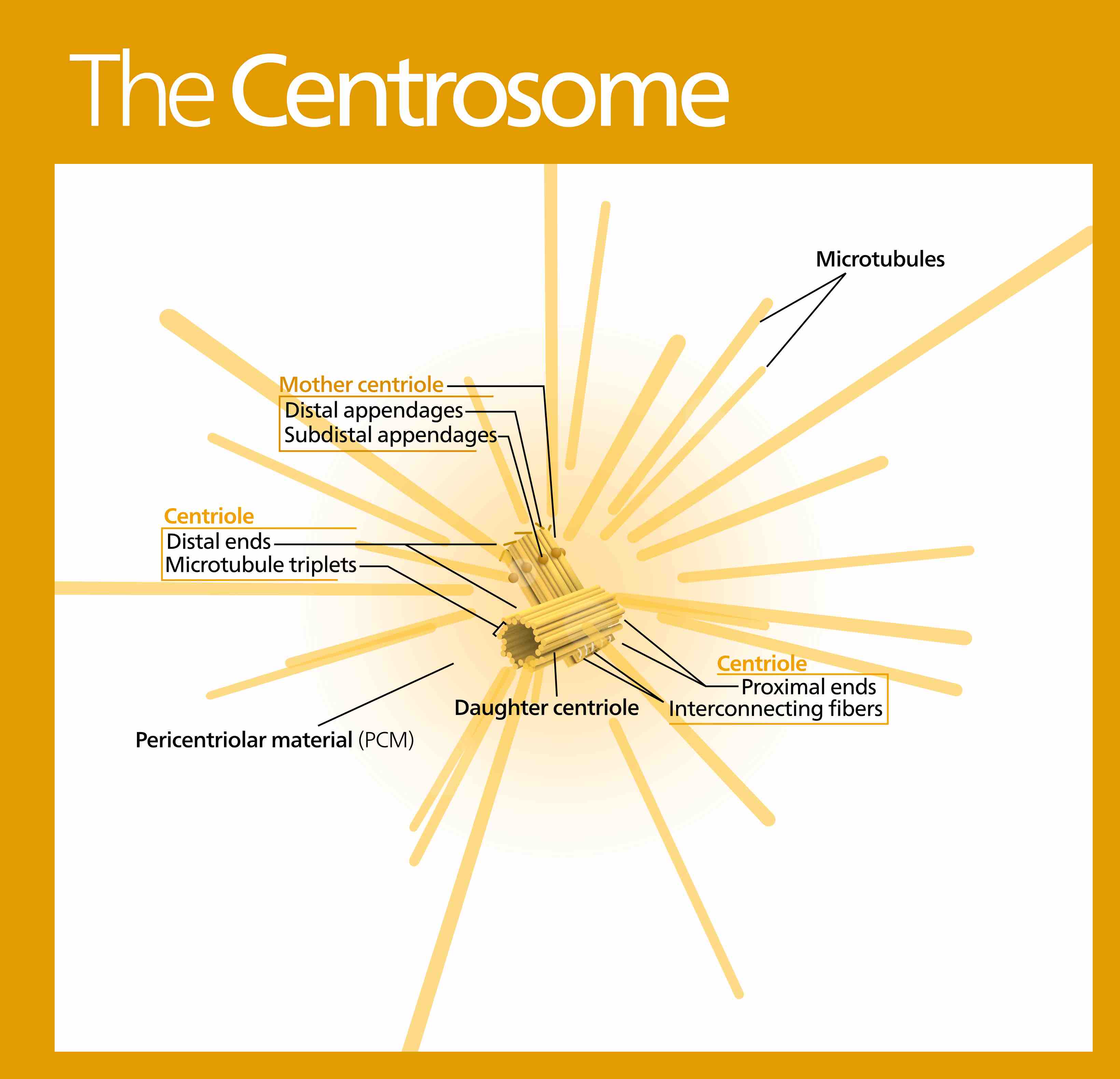In cell biology, the centrosome is an organelle that serves as the main microtubule organizing center (MTOC) of the animal cell as well as a regulator of cell-cycle progression. In the theory of evolution the centrosome is thought to have evolved only in the metazoan lineage of eukaryotic cells. Fungi and plants use other MTOC structures to organize their microtubules.
Centrosomes are composed of:
- two orthogonally arranged centrioles . In general, each centriole of the centrosome is based on a nine triplet microtubule assembled in a cartwheel structure. The centrioles are surrounded by
- an amorphous mass of protein termed the pericentriolar material (PCM) . The PCM contains proteins responsible for microtubule nucleation and anchoring.
Role of the centrosome in cell cycle progression
Centrosomes are associated with the nuclear membrane during prophase of the cell cycle. In mitosis the nuclear membrane breaks down and the centrosome nucleated microtubules (parts of the cytoskeleton) can interact with the chromosomes to build the mitotic spindle . The mother centriole, the one that was inherited from the mother cell, also has a central role in making cilia and flagella. The centrosome is copied only once per cell cycle so that each daughter cell inherits one centrosome, containing two structures called centrioles.

Role of the centrosome in cell cycle progression
The centrosome replicates during the S phase of the cell cycle. During the prophase in the process of cell division called mitosis, the centrosomes migrate to opposite poles of the cell. The mitotic spindle then forms between the two centrosomes. Upon division, each daughter cell receives one centrosome.
The centrosome replicates during the S phase of the cell cycle . During the prophase in the process of cell division called mitosis, the centrosomes migrate to opposite poles of the cell. The mitotic spindle then forms between the two centrosomes. Upon division, each daughter cell receives one centrosome. Doubling of a centrosome is similar to DNA replication in two respects: the semiconservative nature of the process and the action of cdk2 as a regulator of the process. But the processes are essentially different in that centrosome doubling does not occur by template reading and assembly. The mother centriole just aids in the accumulation of materials required for the assembly of the daughter centriole.
Interestingly, centrioles are not required for the progression of mitosis. When the centrioles are irradiated by a laser, mitosis proceeds normally with a morphologically normal spindle. In the absence of the centrioles the microtubules of the spindle are focused by motors allowing the formation of a bipolar spindle. Many cells can completely undergo interphase without centrioles.
Unlike centrioles, centrosomes are required for survival of the organism. Acentrosomal cells lack radial arrays of astral microtubules. They are also defective in spindle positioning and in ability to establish a central localization site in cytokinesis. The function of centrosome in this context is hypothesized to ensure the fidelity of cell division because it greatly increases the efficacy. Some cell types arrest in the following cell cycle when centrosomes are absent. However, this is not a universal phenomenon.
Aberrant numbers of centrosomes in a cell have been associated with cancer. The presence of an inadequate number of centrosomes is very often linked to the apparition of genome instability and the loss of tissular differentiation.

The Centrosome
Centrosomes are composed of two orthogonally arranged centrioles surrounded by an amorphous mass of protein termed the pericentriolar material (PCM). Microtubules are anchored at the centrosomes.